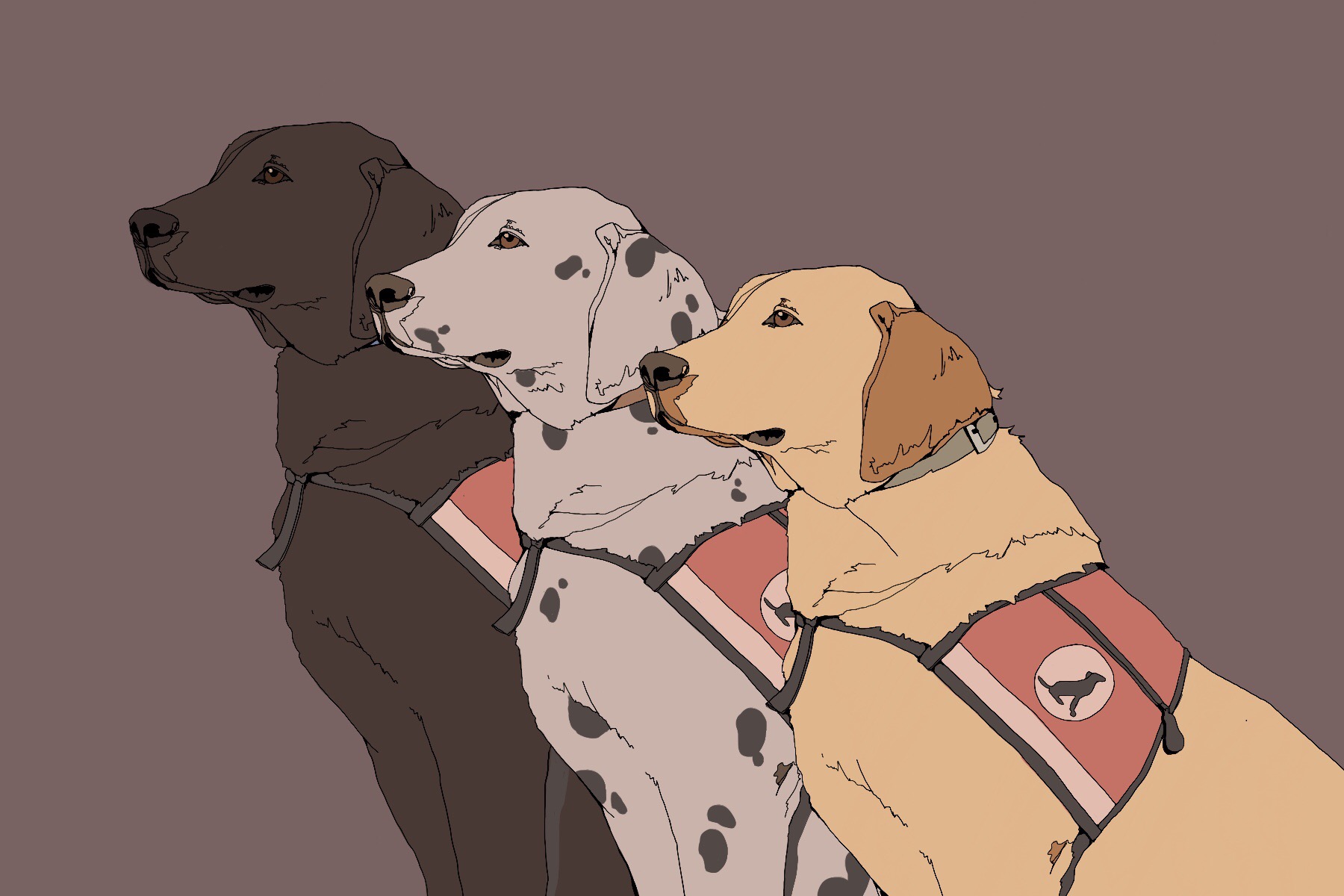Service dogs are chosen for a life of work before they are even born. Their parents are carefully selected by intelligence, behavior, health and temperament. Service dog organizations will even share dogs and the sperm of dogs that are known to create the “perfect candidates” so they can have as many puppies as possible become successful service dogs — dogs that will help people with disabilities live happier lives.
From the moment service dogs are born, they are trained. They are exposed to strange noises, sensations and touch as they begin their training, which will help them handle the day-to-day lives of their owners even before leaving their whelping box.
I worked for a service dog organization that had their dogs work with various trainers throughout their lives. In a single year, a dog would work with up to four different trainers. This consistent change of scenery taught the dog how to respond to different types of people.
For over a year, I learned a lot about patience, disabilities and dedication. I had the opportunity to experience what a service dog’s life is like behind the scenes, and I know now that training service dogs is no easy feat. The dogs in training must be with trainers at all times so they can have the exposure that they need to be able to perform in real life situations.
This means that whenever a trainer goes to the grocery store, the movies or out with friends, the dog goes with them; it’s important to remember that these are not fully-trained service dogs. So while they are out, a trainer always has to keep their service dog in check and teach them the important skills they need to know. This takes constant focus and attention to what the dog is doing and how they are behaving.
You have to be extremely patient so the dog can have the time and space to learn new skills without excess pressure; I considered myself to be a patient person until I had to stop everything I was doing every five minutes to help my dog understand where they were supposed to be and how they should act.
And the service dogs needed to learn this patience along with me. The dogs spend most of their lives working to help their companion. They have to open doors, turn lights on and off, pick things up, alert their owners and so much more. They must always be ready to leap into action — the best service dogs are always eager to jump in and help, even if some of the dogs in the training program would much prefer to nap.
I worked with many dogs, but I particularly remember a scared golden retriever and a boisterous black lab. The golden retriever was a very anxious girl; she was never able to relax, which made outings difficult for her. We would always take things slowly and work in new experiences the best we could without overwhelming her, but she never stopped fighting me. She was afraid of things that, as a service dog, she would have to interact with every day.
The black lab was the opposite — he was big, loud and completely over the work he had to do. He would do everything I asked of him because he wanted to please his trainer, but he was constantly bored. He was too smart for all these tasks and too energetic to be sitting around all day, waiting for the human to finish up their meaningless business. When he got bored, he would bark for attention, wanting to be taken somewhere more exciting.
Neither of these dogs were fond of their service dog work, so why were they kept in the program? Because even though they didn’t like it, they could do it well. Both dogs were extremely intelligent and eager to please. They excelled in their work but dreamed of other jobs that they could be doing instead.
Most service dog organizations take what would make the dog happy into consideration, but it is only one part of the equation. Other aspects include availability of service dogs, whether they need those dogs to go to clients because they don’t match with any other personality, and their ability to perform well as a service dog (even if they wouldn’t enjoy it).
The golden retriever recently graduated, not as a service dog but as a therapy dog, which is where she will be happiest. Giving people love and support in rough situations was her specialty, and she loved the therapy work that we did during our time together. The black lab is still in training, waiting to see if he succeeds as a service dog. I know he dreams of search and rescue, which was his favorite training program that we did together — a life of service work wouldn’t be exciting enough for him.
The passion that trainers show their dogs is extremely important because you only get as much as you put in. If you give a service dog 100%, then they will give you 100% in return.
No dog carried as much dedication as a small yellow lab that I trained. She was always ready to work, and she loved her job — but if you weren’t giving her everything you had, she saw no reason to return the favor. Her sass is exactly what all service dogs need because they must be intelligent and understanding of their humans.
Nothing is more satisfying than seeing one of your dogs in training learn a new tool that will help them be a better service dog. The first time one of those dogs flips off the light switch, picks your phone up from the ground or runs off to successfully bring back help after you’ve “fallen” is so rewarding.
Knowing that those skills will someday help create a better life for those with disabilities makes the hard work worth it. While not all dogs are cut out for, or enjoy, this line of work, the ones that pursue it make incredible companions and completely change the lives of their chosen partners.













